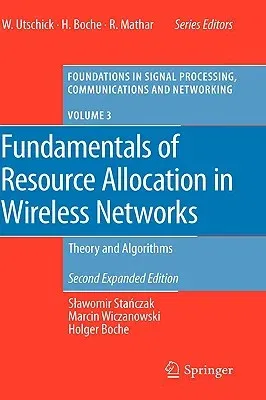Slawomir Stanczak
(Author)Fundamentals of Resource Allocation in Wireless Networks: Theory and Algorithms (2008)Hardcover - 2008, 7 July 2009

Qty
1
Turbo
Ships in 2 - 3 days
In Stock
Free Delivery
Cash on Delivery
15 Days
Free Returns
Secure Checkout

Part of Series
Foundations in Signal Processing, Communications and Network
Part of Series
Foundations in Signal Processing, Communications and Networking
Print Length
320 pages
Language
English
Publisher
Springer
Date Published
7 Jul 2009
ISBN-10
3540793852
ISBN-13
9783540793854
Description
Product Details
Book Edition:
2008
Book Format:
Hardcover
Country of Origin:
NL
Date Published:
7 July 2009
Dimensions:
23.39 x
15.6 x
2.54 cm
Genre:
Science/Technology Aspects
ISBN-10:
3540793852
ISBN-13:
9783540793854
Language:
English
Location:
Berlin, Heidelberg
Pages:
320
Publisher:
Series:
Weight:
811.93 gm